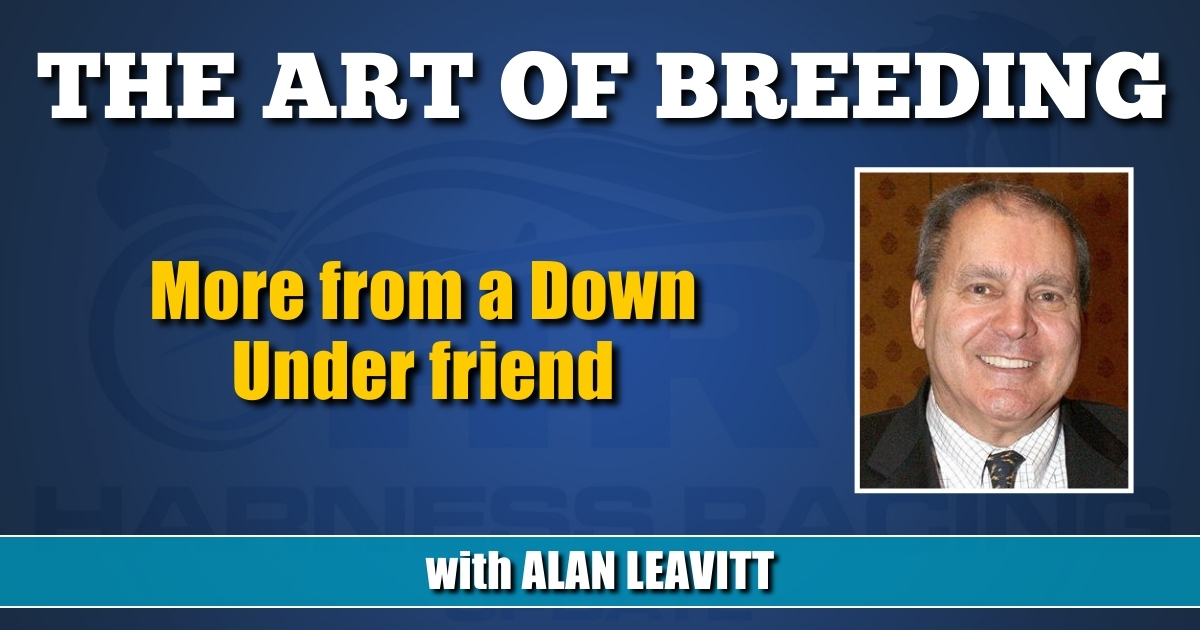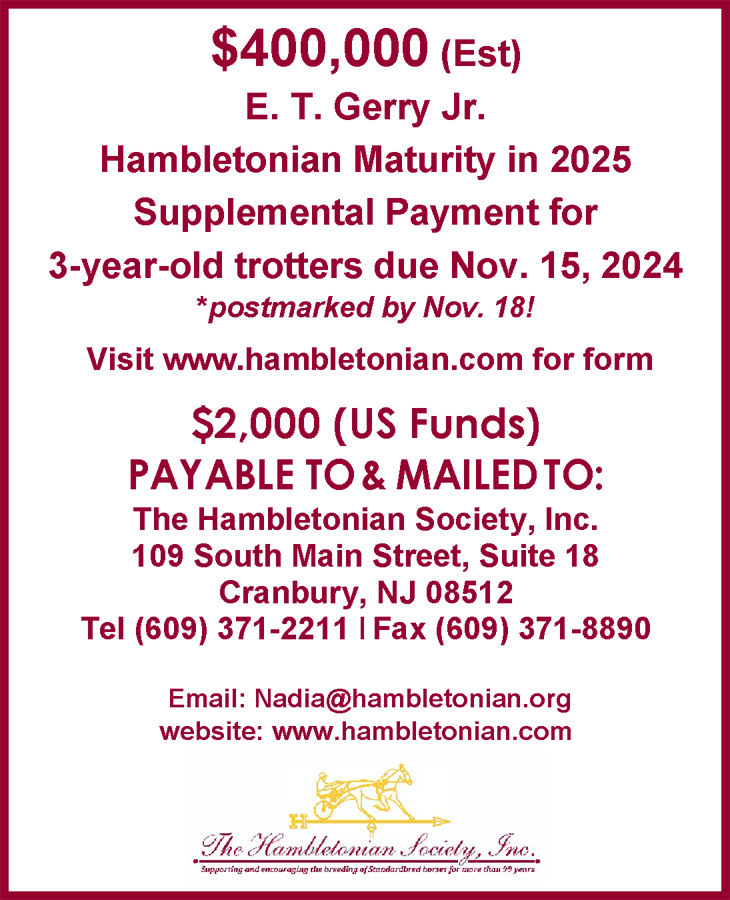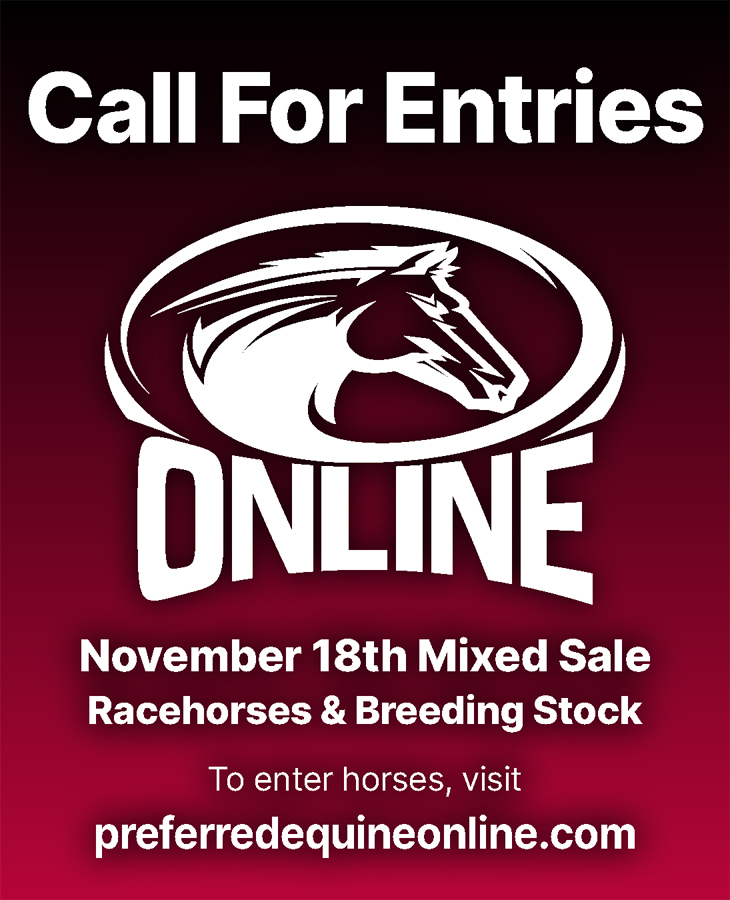More from a Down Under friend
by Alan Leavitt
The best part of this writing gig is the long distance friendships I’ve made with fellow breeding enthusiasts. I’m struck by how knowledgeable Peter Denmen and Pat Schmidt are about harness racing here in the U.S., even though they both live in Australia.
Denmen just pointed out to me another inbred stakes winner, the 2-year-old pacing filly Predict The Future. For those who don’t follow racing as closely as he does, Predict The Future just won the final of the Maryland Sire Stakes.
Predict The Future is by All In, by Western Hanover, and out of Jo Pa’s Eat O, also by Western Hanover. In technical terms she’s 2 X 2 to Western Hanover, which in one sense goes beyond being inbred to being incestuous. But whatever you want to call it, the filly is the living proof that you can breed very close and come out with a winner, at least some of the time.
But there’s another interesting thing about Predict The Future’s pedigree. Her third dam is a New Zealand-bred mare Just A Glow, who took a record here of p, 2:00 2/5 f and earned $45,285. She’s by Fallacy, a son of Light Brigade, who was by Volomite.
New Zealand has traditionally been the Down Under breeding center which supplied Australia with its racing stock. New Zealand is a small country, population wise, and on one of my two visits there eons ago, it was described to me by a native as a country of two million people and 70 million sheep. I’m sure the population, people wise, has gone up, but I’m not so sure about the sheep.
The foundation of the New Zealand breeding industry was two great bred American stallions, Light Brigade and U. Scott. They were both long lived studs, and they were both prepotent, i.e. a genetic range, in playing card terms, that held only high cards.
Despite its small size, both people and horse population wise, the New Zealand breeding industry, if you could call it that, still produced the great Cardigan Bay. I still have vivid memories of Cardy’s first three races here. Stanley Dancer had gone to Australia and bought him for $100,000 for Irving Berkemeyer, by day an undertaker, who took half, and several other clients who partnered up to take the other half.
I knew Berkemeyer, to the extent one could say he knew someone who seldom spoke and never smiled. Every time Cardy raced, Mr. B. would dispatch someone to the betting windows at post time to put down $10,000 to win. After the race, the same courier would return to the table with Mr. B’s winnings, then he would get a doggy bag for what remained of their meals, and they would depart silently into the New Jersey night.
Regarding the first three U. S. races I got distracted from by other things, Cardigan Bay and Overtrick went head-to-head three weeks in a row at Yonkers, and they literally were head-to-head every step of the way. If memory serves, Overtrick won two of them and Cardy won one, but there wasn’t as much as a neck total difference between them for all three races.
Back to the mare Just A Glow, the third dam of Predict The Future, our latest inbred stakes winner of note. Just A Glow happens to also be the fourth dam of Charlie May, who heads to the Breeders Crown Finals as one of the favorites in the race for Three-Year-Old Pacing Colts.
Mentioning Western Hanover brings back a memory from long ago. When I first got in, one of the first people I came to know was Max Hochberg. He was basically a gambler, but somehow or other he became, first, a racehorse owner, and then a breeder.
Johnny Simpson operated a public stable in those days, and when Hochberg came up with a top pacer named Torrid, he took him away from one of the first successful women trainers, Hilda Heydt, and gave him to Simpson.
Torrid went on an unbeaten streak of something like 11 straight free-for-alls, giving Hochberg a nice little nest egg to work with. By then Hochberg had bought Torresdale, Torrid’s dam, and when he bred her back to Knight Dream, he got a world beater named, of all things, Torpid.
Torpid won everything at 2 and 3, including the Little Brown Jug, and then Hochberg made a lease deal to stand him at Hanover Shoe Farms. There the horse was given every chance, but didn’t make it as a sire. In fact, his less celebrated older brother, Torrid, turned out to be a better sire, but still fell short of being a success.
The reason Western Hanover brings Max Hochberg to mind is Western Hanover’s fourth dam, Wayblaze. The last standardbred Max owned was Wayblaze, whom he bought out of the Northfield Sale for $1,800. She was by King’s Counsel, out of Goldie Patch, by Peter Nutonia. She only had a record of 2:08.4, with no earnings, but her dam Goldie Patch, had a record at 3 of 2:00.1/2, with $4,000 in earnings. She was a foal of 1938, so both her record and her money were meaningful in her day.
Hochberg saw something in Wayblaze that I was oblivious to, but Johnny Simpson and Lawrence Sheppard respected Hochberg’s judgement enough to buy Wayblaze when Hochberg sold out at Harrisburg in 1972. That paid off for them in spades when they kept the first three generations of fillies that started with Wayblaze, and her great granddaughter came up with Western Hanover.
Here, an aside, re: Hochberg and the Northfield sales, which Hochberg and I both attended like a religious observance. One afternoon, a day before the sale started, on a date now lost in time, Hochberg and I were going to lunch in his car. He stopped at a little hamburger stand, where we each bought a burger for 25 cents.
“Just look at this,” Hochberg said. “The burgers are already made up, and they just heat them up when a customer shows up. And every one of them is identical. Someday, these places will be everywhere.”
Enter McDonald’s, Wendy’s, et al. stage left. How prescient Hochberg was, both about horses and hamburgers.

















